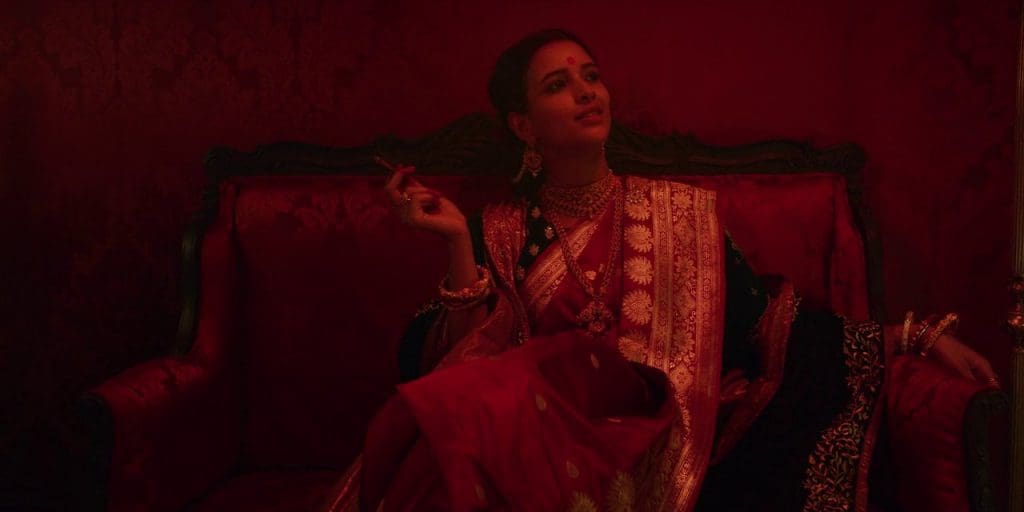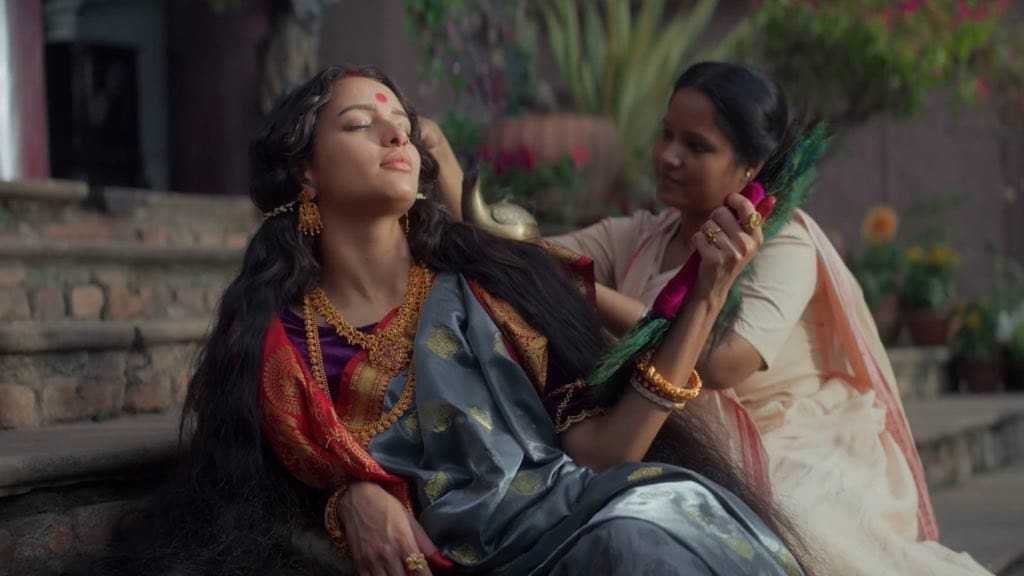
Radhika Menon
Anvita Dutt’s Bulbbul is a wakeup call on the age- old folklore which categorizes women as ‘Chudail’(female demon) if they are free spirited and determined to question the society. Set in the 1880s fictional hamlet under Bengal presidency, Bulbbul combines the supernatural with folklore to address the recurring silence of women who faced oppression under patriarchy. Though highly predictable, Dutt’s storytelling intrigues the viewer. Her characters are inspired from Rabindranath Tagore’s timeless classic Choker Bali and The Broken nest (Charulatha).
Bulbbul is a subversive attack on patriarchy and its progenies that force fed women to be an object in their hands. A contemporary reinvention of dismantling superstitions and age old beliefs.
“Feet” plays an integral part in Bulbbul connecting the dots between freedom and control. The opening scene has a close up shot of feet immersed in alta dangling from a branch. Later we see the child bride, Bulbbul (Ruchi Mahajan) asking her aunt, why toe rings are worn. To this her aunt replies: to control the nerves of women who will otherwise fly away. On Bulbbul’s way to her new home after her marriage to Indranil – the aristocrat (who is way older than her) in the palanquin, her brother- in- law , Satya tells her the story of a murderous blood thirsty Chudail who lives on trees. Twenty years later the child bride has grown up to be a gorgeous woman who is the mistress of the manor while her husband is nowhere to be seen.


Bulbbul can be classified as a feminist fable that is prevalent in today’s times. As the film unfolds, a series of killings in the village force Satya to investigate the murders. Going back and forth from past to present and vice versa, the frames complement the narrative depicting the journey of innocence to maturity. Siddharth Diwan’s cinematography is praiseworthy. Dutt uses surrealism to give voice to the voiceless. The film is rich in its symbolism, metaphors and politics but visible only to a keen observer. The actors did a fair job with their solid performances. Paoli Dam as Binodini, the sister-in-law excels in her grey shade whose motives are driven by a submissive upbringing. Rahul Bose shines finely as an aristocratic dominant lord Indranil as well as the differently abled twin, Mahendra. Tiwary as Satya is commendable as a companion, Chatterjee as Dr Sudip is sincere in his act, Tripti Dimri as Bulbbul with her skilful and nuanced expressions and beguiling eyes is a visual treat. Background score by Amit Trivedi enhances the emotional state of the characters leaving the viewers in an eerie state. Throughout the film, red is used as a dominant colour to depict the anger and violence in the narrative.
Having said that Dutt’s characters feel incomplete, they needed a deeper understanding. Sometimes even when you want to feel them you can’t because of the lack of exploration. This seems more relevant in the case of Binodini, Satya and Dr Sudip. There is a dearth of dialogues in the film which makes it feel more like a monologue.
Bulbbul is the third film produced by Anushka Sharma which has supernatural and female redemption as its central theme. Her previous films: Phillauri and Pari uses surrealism as an object —– to fight patriarchy. Being a debutant Anvita Dutt’s attempt is highly admirable and promises a better future for her as a writer-director. Bulbbul will certainly disturb you irrespective of its minor flaws. The frames stay with you for its expressive nature and aesthetics. By giving wings to unconventional storytelling Anushka Sharma’s Clean Slate films has opened new doors in filmmaking.
Radhika Menon is a freelance creative writer and journalism graduate from Kerala.



